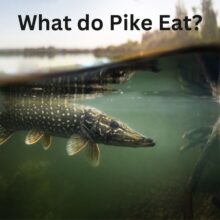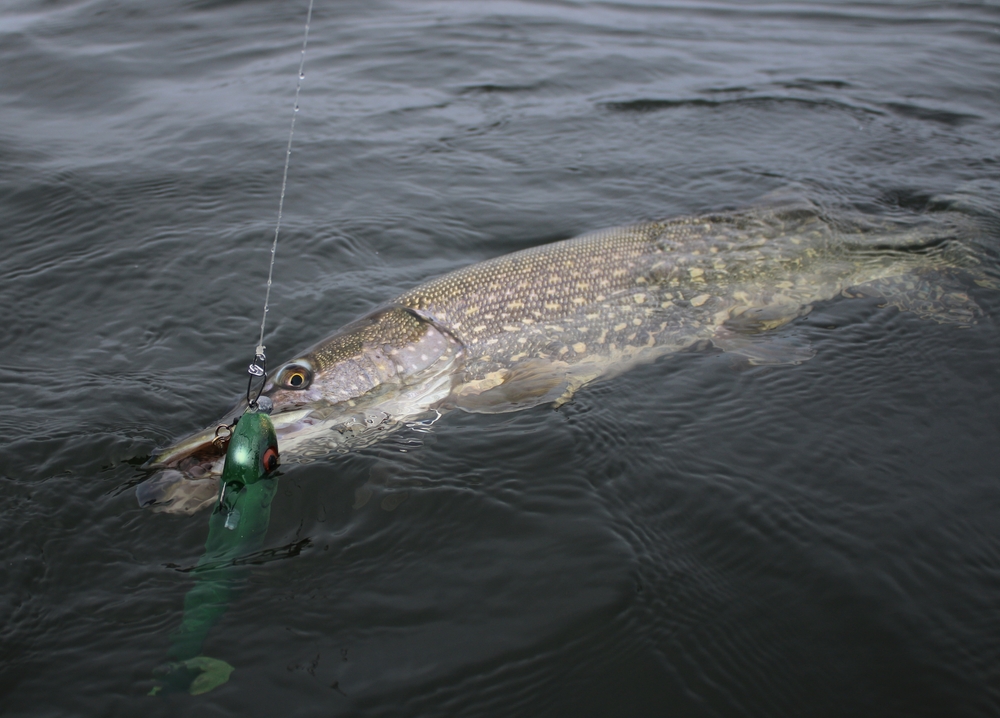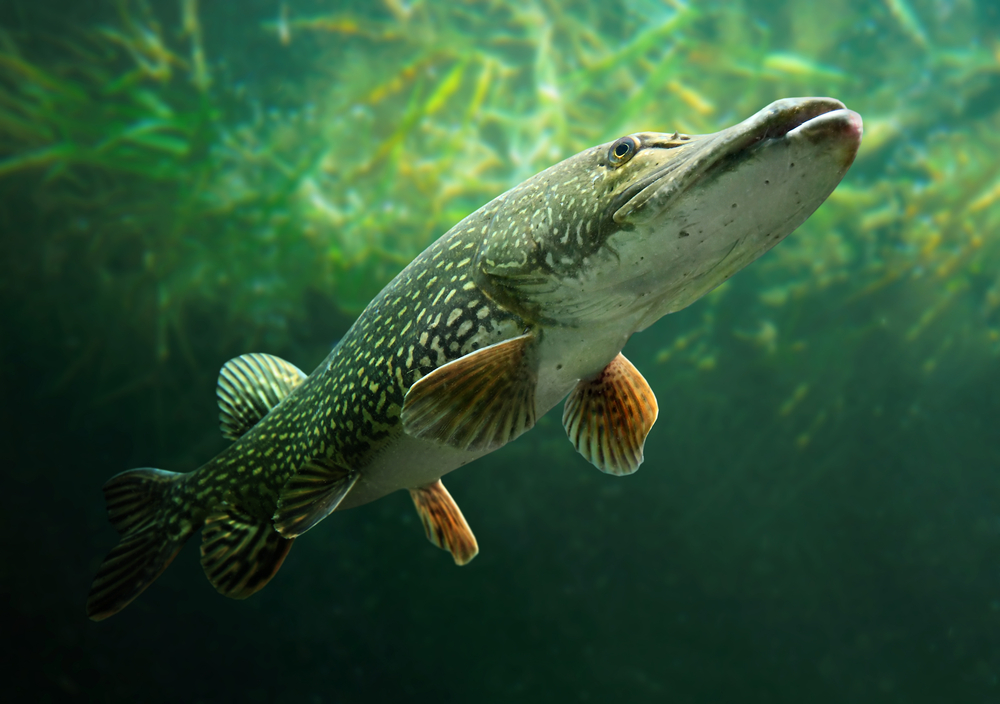This article may contain affiliate links. If you make a purchase after clicking on a link we may earn a small commission at no extra cost to you. As an Amazon Associate, I earn from qualifying purchases.
What do Pike Eat?

Fishing for pike is a popular pastime for many anglers, but knowing what these predatory fish eat can make all the difference in catching them.
Pike are opportunistic feeders and will consume a wide variety of prey items depending on their size, location, and other factors. In this article, we will explore the diet of pike in detail, from their primary prey to less common items, and how their diet can change throughout the year.
So, whether you are a seasoned pike angler or just starting out, understanding what pike eat can help you land more fish and have a more successful day on the water.
What do Pike Eat?
- Perch
- Shad
- Trout
- Panfish
- Minnows
- Frogs
- Ducklings
Pike Diet Overview
Pike are carnivorous fish that feed primarily on other fish, although they will also eat small mammals, birds, and invertebrates. They are ambush predators and will often wait patiently for their prey to swim by before striking quickly and swallowing them whole.
The size of the prey that a pike will consume is largely determined by its own size – larger pike will consume larger prey, while smaller pike will feed on smaller prey.
The diet of pike can vary depending on a number of factors, including the location of the fish, the time of year, and the availability of prey.

Pike in different regions may have access to different prey species, and they may adjust their diet depending on what is available to them. For example, pike in a lake with a large population of perch may primarily feed on perch, while pike in a river with a lot of minnows may eat mostly minnows.
Overall, pike are opportunistic feeders that will eat a wide range of prey items depending on the circumstances. Understanding their primary prey and how they hunt and consume them is essential for successful fishing.
Primary Prey
The primary prey of pike includes other fish such as perch, crappie, walleye, trout, and other small fish species. Pike prefer to feed on fish that are smaller than themselves, but they have been known to take fish up to half their own size or even larger in some cases.
Pike are ambush predators, and they use their sharp teeth and powerful jaws to strike and swallow their prey whole. They often hunt near structures such as weed beds, submerged logs, and drop-offs where prey fish are likely to be hiding or swimming by.

When hunting, they will often use their lateral line to detect the vibrations caused by the movements of nearby fish.
Some of the most common prey fish for pike include:
- Perch: Pike and perch are often found in the same waters, and pike are known to feed heavily on perch, especially smaller ones.
- Panfish: Pike will eat panfish such as bluegill, sunfish, and crappie if they are present in their habitat.
- Walleye: Pike will eat young walleye but less often that perch or other small species.
- Trout: Pike will eat trout but only smaller trout in shallower waters.
Understanding the behavior of these primary prey species and how pike hunt and consume them is crucial for successful fishing. By using lures or live bait that mimic the movement and appearance of these prey items, anglers can increase their chances of catching pike.
Uncommon Prey
While pike primarily feed on other fish, they have been known to consume a wide range of other prey items as well. Some of these less common prey items include:
- Waterfowl: Large pike have been known to take waterfowl such as ducks and coots when they are swimming on the water’s surface. This behavior is more common in northern regions where waterfowl populations are high and pike have fewer prey options.
- Frogs: Pike will sometimes eat frogs that are swimming near the surface of the water or resting on vegetation. Frogs are more commonly eaten by smaller pike, but larger ones have been known to take them as well.
- Small Mammals: In some cases, pike have been known to consume small mammals such as mice and voles that are swimming or crossing the water. This behavior is rare, but it has been observed in certain regions.
- Invertebrates: While pike primarily feed on fish, they will also consume invertebrates such as crayfish, snails, and insects when other prey options are limited.
Understanding these less common prey items and the situations in which pike may consume them can be useful for anglers who are looking to try new tactics or experiment with different types of bait. However, it’s important to remember that pike primarily feed on fish and that targeting their primary prey is usually the most effective way to catch them.
Seasonal Changes
The diet of pike can change throughout the year as a result of seasonal changes in water temperature, water level, and prey availability. Understanding how these changes affect the feeding habits of pike can be helpful for anglers who are looking to target them at different times of the year.
In the spring, when the water is warming up and the ice is melting, pike will become more active and start feeding more heavily. They may feed on smaller prey items such as minnows and insects that are more abundant during this time. As the water temperature continues to rise, larger prey items such as perch and roach become more active, and pike will start to feed on them more frequently.
During the summer months, when the water is at its warmest, pike may become less active and feed less frequently. They may still feed on smaller prey items, but they may also become more selective and prefer larger prey items that are more energy-efficient to catch. As the water temperature cools down in the fall, pike will become more active again and start feeding more frequently.
In the winter, when the water is coldest and the ice has formed, pike will become less active and feed less frequently. However, they may still feed on smaller prey items such as minnows and invertebrates that are active under the ice.
Overall, the feeding habits of pike can change throughout the year depending on a variety of factors. By understanding these changes and adjusting their tactics accordingly, anglers can increase their chances of catching pike at different times of the year.
Conclusion
In conclusion, understanding what pike eat and how their diet can change throughout the year is essential for successful fishing.
Pike are primarily fish eaters, and their diet includes a variety of prey items such as perch, roach, rudd, and bream. However, they have also been known to consume less common prey items such as waterfowl, frogs, and small mammals.
Seasonal changes in water temperature, water level, and prey availability can also affect the feeding habits of pike, and anglers who are looking to target them at different times of the year should adjust their tactics accordingly.
Overall, by understanding the feeding habits of pike and using tactics that mimic their primary prey, anglers can increase their chances of catching these predatory fish. So, whether you are a seasoned pike angler or just starting out, knowing what pike eat can help you land more fish and have a more successful day on the water.
